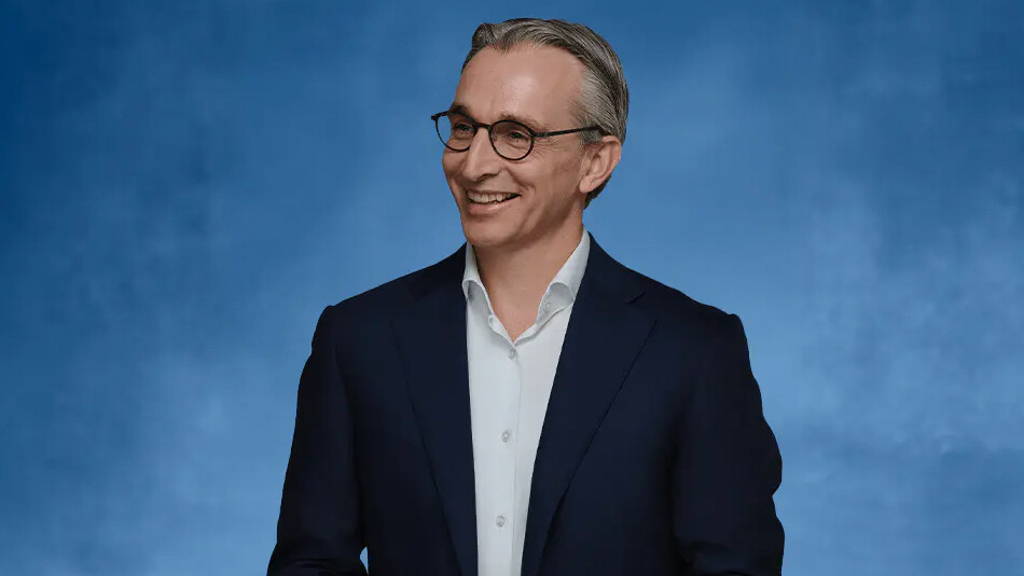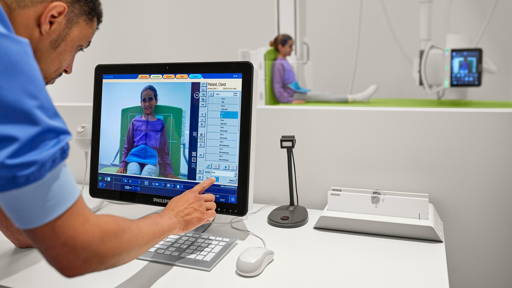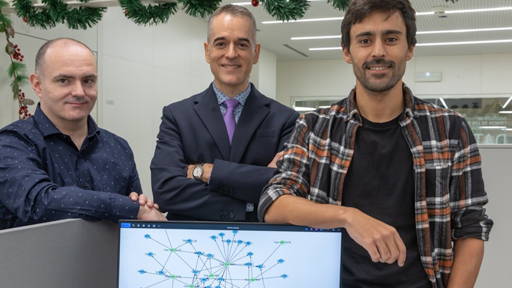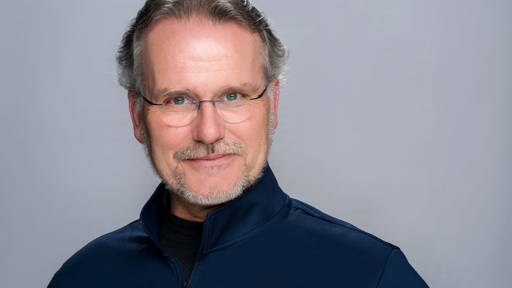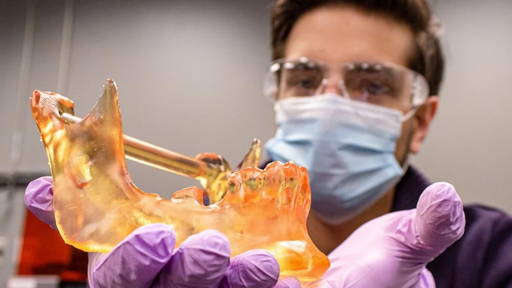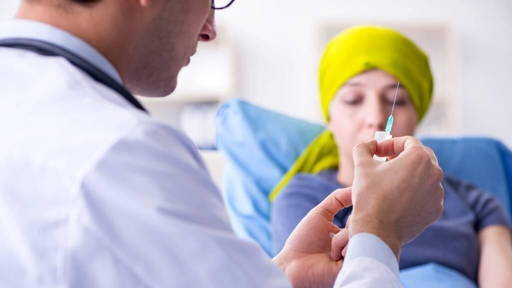Roy Jakobs, CEO of Philips, has a clear mission: to enable better care for more people. Because the healthcare challenges we face are big and are only expected to get bigger, he says. This calls for drastic changes. In his view, better care means better accessibility, more efficiency and optimal quality with the help of innovation and technology. For the transformation of healthcare into a future-proof and sustainable form of service, Jakobs sees culture change as an important precondition, in which technology should not be seen as extra work, but mainly as supportive. AI is not there to replace care staff, but to relieve them. And that requires (digital) applications that improve healthcare practice. In this interview, Jakobs tells us how het puts this into practice.
From what vision are you and Philips entering the market for health technology and digital applications in healthcare?
"We see worldwide that healthcare is under enormous pressure due to increasing demand, staff shortages and rising costs. At the same time, technology, especially artificial intelligence (AI), offers enormous opportunities to speed up processes, support healthcare professionals and improve patient care. We do this by developing smart and integrated solutions, such as imaging, remote monitoring and advanced workflow optimization.
Our strategy is people-oriented: technology should support healthcare providers so that they can spend more time on their patients instead of on administrative tasks. We also believe in an ecosystem approach, in which we work closely with hospitals, policymakers, researchers and other technology companies to accelerate innovation on a large scale."
What do you understand by high-value innovations in this context?
"High-value innovations in healthcare are technologies and digital applications that directly contribute to better patient care, more efficient healthcare processes and a more sustainable healthcare system. Innovation is only valuable if it has real impact in practice, supports healthcare providers and actually and measurably improves the quality and accessibility of care."
'Crucial to make a positive impact together now'
"At Philips, we focus on innovations that speed up diagnostics, reduce administrative burdens and optimize care processes. A good example is our SmartSpeed MRI software, which makes scans up to three times faster and increases image quality, allowing radiologists to make faster and more accurate diagnoses and enabling hospitals to help more patients.
Another good example is the latest MR Workspace-which streamlines workflows, allowing physicians to make faster and more accurate diagnoses."
"In addition, we believe that innovation is effective when it is widely applicable and scalable. That's why we develop technologies that align with international standards and integrate well with existing healthcare systems."
Where is Philips' current focus regarding digital applications and why?
"The focus is on artificial intelligence (AI), data integration and remote care, as the healthcare sector is under pressure worldwide due to staff shortages, rising healthcare costs and administrative burdens. AI can help healthcare providers make faster and more accurate diagnoses or perform better and more minimally invasive surgery. Data integration allows information to flow freely between systems, in different locations, giving physicians a complete patient picture. Remote care enables flexible and more efficient care."
"In addition, Philips is committed to reducing the administrative burden in healthcare. With AI-based workflow solutions, we automate repetitive tasks so that healthcare providers have more time for their patients. We advocate faster implementation of innovations with care for change management and more active involvement of technology companies in healthcare policy."
You and Philips are committed to helping doctors and nurses provide better, more sustainable and convenient care in hospitals, clinics and at home, and empower people to take care of their health and well-being. Specifically, what does that look like?
"One concrete example is the Radiology Operations Command Center, which allows radiologists to remotely operate and support scanners. This means that less experienced lab technicians can receive on-site guidance from experts elsewhere, making more efficient use of scarce specialist knowledge. A pilot study in the United Kingdom showed that 9 percent more scans could be performed."
"Thanks to remote scanning functionality, experienced users can edit MR, CT or PET-CT scanner consoles in real time, from any location, and share their knowledge via on-demand chat, voice and video collaboration, without compromising privacy, safety or security This is particularly important in a world of increasing scarcity of healthcare personnel. Furthermore, Philips is working on other remote care technologies, such as wearable sensors (e.g., the ePatch) and AI solutions that help with early diagnosis and monitoring."
Based on Philips' vision and mission, how does the apnea affair affect you?
"When I started as CEO at Philips, I made patient safety and quality the top priority of everyone in the organization. Our safety notification for sleep apnea devices had a major impact on patients, their caregivers, caregivers and families, as well as our own colleagues. We took responsibility from the beginning and launched a global safety notification for nearly 5.5 million devices. In addition, we initiated a large-scale testing program with five certified and independent laboratories to get complete clarity on the situation, because every safety notification we have to make is one too many. It was also very important to get clear that patients were not at health risk."
"Our mission at Philips is to develop technology that supports healthcare providers and helps patients live healthier lives. And that means not only innovating, but also maintaining the highest standards in patient safety, quality and cybersecurity."
How do you view increased collaboration between industry, technology, healthcare professionals, and patients, and what are the opportunities and challenges here?
"That collaboration between technology companies, hospitals, government, regulatory institutions and insurers, as well as banks, is crucial. Innovation and technology only have impact when it is not only technically advanced, but also practically applicable within clinical practice, supported by regulations and financially feasible for healthcare institutions.
The opportunities lie in accelerating innovation to reduce pressure on staff. The challenges lie primarily in implementation. Innovation in healthcare is often slow: it takes too long for new technologies to become commonplace in practice. There are many reasons for this, such as little change management or challenges in funding or complex regulations, as well as limited involvement of technology companies in healthcare policy. So that makes collaboration important."
'AI helps healthcare providers make faster and more accurate diagnoses'
"I also really want to make the point that healthcare organizations often operate on tight budgets, while new technologies sometimes require an initial investment before they yield cost savings. That's why it's essential that insurers and banks develop new financing models to enable digital transformation."
What is the dot on the horizon for you in the context of health technology and what are the biggest bumps in the road?
"The dot on the horizon is that we can help healthcare systems worldwide enable better care for more people. In this, technology supports healthcare providers, processes are efficient, and care is accessible and sustainable. In addition, technology should improve care and outcomes for patients. This means that AI and digitization take routine work out of the hands of healthcare professionals so that they can focus on patients. Remote care is widely deployed, allowing patients to be monitored at home more often and hospitals to operate more efficiently. In addition, data is better integrated, so doctors quickly have a complete patient picture and diagnoses and treatments are faster and more accurate. We strive for person-centered treatment based on complete patient data."
"The biggest bumps are in the speed of adoption, regulation and funding. Innovations often come into practice too slowly due to complex approval processes and slow implementation. During a visit to the Catharina Hospital in Eindhoven, it was explained to me that it can take up to 17 years for an innovation to be adopted, partly because of the fragmentation in the region and healthcare system. This is why I always say that regulations should encourage innovation rather than inhibit it; financiers such as insurers and banks should invest in new technologies with sustainable revenue models. Culture change within healthcare is also needed: there is much to be gained for patients, providers and hospitals by improving the adoption of new technology. We can do this by focusing more on collaboration and training."
In your view, what role does the development of AI play in this regard?
"AI plays a crucial role! By automating processes, reducing administrative burdens and speeding up diagnoses and interventions, AI can support healthcare providers and make them work more efficiently with better patient outcomes."
"A key benefit of AI is that it can analyze large amounts of data and help healthcare professionals make faster and more accurate decisions. For example, in imaging, such as MRI scans, AI can help detect abnormalities faster, increasing diagnostic accuracy and reducing the workload for radiologists. Similarly, in ICU and patient monitoring, AI helps identify trends in vital signs early, preventing complications."
'New financing models from banks and insurers are essential'
"In addition, AI makes remote care and hybrid care models more possible. Patients can be monitored at home with smart sensors, while AI analyzes the data and alerts caregivers only in case of abnormalities. AI can play a role here as a coach to healthcare personnel and the patient!"
"The challenge lies in responsible and safe implementation. AI must be transparent, reliable and well-integrated into existing healthcare processes. This requires close cooperation between healthcare providers, regulators and technology companies."
What do you expect from your call for the European Union to prevent regulations from slowing down the development of AI?
"First of all, I want to emphasize that we need a strong and connected Europe. I expect the European Union to strike a balance between responsible regulation and stimulating innovation. The EU AI Act is an important step to implement AI in a safe and ethical way, but there is a risk that overly strict regulation slows down innovation and puts Europe at a disadvantage compared to the U.S. and China. When regulations are too complex and restrictive, it can cause companies to invest less in AI innovations, talent to leave the EU and solutions to come to market too late."
"This is why I call on the EU to work closely with industry, healthcare, scientific and financial institutions so that regulations support innovation rather than inhibit it. We need a framework that encourages AI while ensuring transparency, safety and ethics. Europe has the knowledge and expertise to play a leading role in AI for healthcare, but it can only do so if legislation allows for development and scale-up of technologies that improve care."
Which digital applications developed under your leadership are you most proud of and why?
"I am proud of all the digital innovations we have realized in recent years, which directly contribute to better care, more efficient work processes and reducing the workload of healthcare providers. I already mentioned SmartSpeed, MR workspace and the Radiology Operations Command Center. These are all innovations with AI and I think it is important to emphasize that there are no more innovations from Philips without AI!"
"I am also proud of innovations that enable care outside the hospital, such as the introduction of the Philips ePatch, an innovation that improves patient care while reducing the workload for caregivers. The ePatch is a smart patch that detects cardiac arrhythmias such as atrial fibrillation without the limitations of traditional Holter monitors. Patients can simply shower and exercise with the ePatch while five days of data is collected - far more than is possible with conventional methods. This leads to more accurate diagnoses and more effective treatments. What makes this innovation extra special is its combination with AI-driven data analysis via the Cardiologs platform, which makes heart data processing much more efficient. A holter analyst who normally takes 20 minutes to analyze one day of holter data can now process five days of ePatch data in the same time."
"Finally, I would like to mention our strategic partnership in Maastricht with MUMC+, where together we are developing technology that directly impacts patient care and reduces the workload of healthcare providers. This four-year partnership focuses on innovations in image-guided treatments, digitization of acute and ICU care and the further development of radiology solutions for neurological and oncology care. What makes this partnership unique is that we bring innovation close to healthcare providers and patients, so that technology is not only cutting edge, but actually connects to practice."
"What all these innovations have in common is that they support healthcare providers in their work, help patients faster and better, and make healthcare systems more sustainable. That's what I'm committed to every day."
Philips recently announced a reorganization in its innovation arm. What is the reason for this?
"Let me start by saying that Philips is an innovation company: innovation is embedded in our DNA and we have been doing it for 130 years. We are now fully deploying our innovation power on healthcare. In the three-year plan I presented, I put the focus on innovation that is close to the customer and has a direct impact on healthcare practice. Therefore, we have placed the responsibility for innovation with our individual business units so that we can respond more quickly and in a more focused way to the needs of healthcare providers and patients in specific healthcare segments. The recently announced changes within our innovation organization concerned support functions and do not affect our Research & Design capacity. Rather, we are even strengthening our commitment to innovation in data and AI."
"A good example of this is the development of an AI-driven solution that enables remote monitoring of intensive care units. Doctors and nurses in different ICUs within the same hospital, a region or even internationally can thus consult with each other. By bringing together data from multiple ICUs into one central system, doctors and nurses can share knowledge and monitor patients better. AI supports caregivers with patient scores, trends and algorithms, allowing them to make faster, more informed decisions and to identify earlier when a patient is deteriorating. This leads to 35 percent fewer serious ICU incidents and 40 percent fewer deaths in the ICU."
You have had quite a lightning career professionally: from marketing unmanned gas stations to now managing Philips. What is your personal motivation for choosing this career?
"My personal motivation has always been rooted in a combination of impact and social responsibility and stems from a belief that with the right commitment and innovative solutions, we can make a difference in the world. In this interplay between technology and people, people are always at the center."
"From a young age I therefore had a keen interest in business, and I knew early on that I wanted to do something with commerce. That eventually led to my studies in Business Administration, where I learned how companies can not only be economically successful, but also make a positive social contribution. I have always worked at companies that use technology to make a positive impact on society first in the energy sector, later in the education sector and now in healthcare."
"Every step of my career has pushed me to look for how technology and innovation can help solve, support and improve people's lives. I have always welcomed new experiences and new challenges. This has helped me grow as a person and leader and has led me to meet so many great people in different countries. When I meet younger colleagues, they often ask me for career advice. I challenge them to also go for new experiences and challenges and, most importantly, to fall and get back up. It's a way of always learning and improving, which is essential in our ever-changing world."
What is your personal vision for leadership?
“In essence, it's about inspiring and empowering people to achieve great results together. Leadership is much more than just giving direction: it's about creating an environment where people feel valued and motivated to do their best work. In doing so, it is important to work toward a clear goal with great focus on execution of a plan. I also sometimes say that I am the chief sense maker. You have to keep things clear and simple.”
“In addition, it takes a balance between trust and expectations. I really believe in giving people the space to do their jobs, but also in the role of the leader to create the urgency and expectations to get the job done, reset the bar and boundaries, keep things relevant and increase impact at scale.”
'Time is precious: spend it where you can make the greatest impact'
“When you give people confidence, they want to show what they can do. It unleashes their best, in motivation and in places they weren't before, to surprise themselves and others.
Then I want to say something about time, our most scarce commodity. As a leader, you have to be very particular about what you spend your time on. You can only spend your time once, and you must spend it where you can have the greatest impact - for the customer, for the company and your colleagues, for society.
I invest time in building and strengthening my team because I believe a well-functioning team is the foundation for success. In addition, I spend time on innovations that improve healthcare processes and can help patients.”
“Personally, time is just as important to me. I want to be there for my family and loved ones, despite a busy schedule. Quality time with my spouse and children is therefore something I consciously plan and cherish. In addition, personal relaxation is important and hobbies. Sports such as soccer and skiing, as well as cooking, help me relax and gain new energy. These activities give me balance and perspective, which is essential to do my job well.”
As far as you are concerned, when is your working life successful?
"I am far from finished working! There is still a lot to do. For me, it's all about making a positive, meaningful impact - for patients, caregivers, colleagues and society as a whole."
"My focus now is putting Philips back where it belongs, as a trusted, innovative partner in healthcare, with a lasting positive impact on people's lives. That includes restoring the trust of patients, healthcare providers and all our other stakeholders by making innovations that move healthcare forward. That's where our strength lies."
Finally, do you have a message or tip for fellow administrators when it comes to the development of digital applications in healthcare?
"My main message to fellow administrators is: accelerate the implementation of digital innovations and work more closely with technology partners, healthcare providers and policy makers.
Many innovations linger too long in pilot phases or are not widely implemented due to complex regulations and funding structures. This slows progress and increases pressure on healthcare providers. My appeal is therefore: dare to invest, actively seek collaborations and ensure that innovations actually enter practice. Look at successful international examples and learn from other sectors that have embraced digitization faster."
"Innovation is not only about technology, but also about leadership and vision. The healthcare sector should not see digitization as a vision of the future, but as a necessity for today. Only by working together and accelerating innovation can we future-proof healthcare."

Roy Jakobs spoke at the ICT&health World Conference in Maastricht last January in the presence of his parents about healthcare challenges and the role of technology. During his keynote, the Philips CEO expressed, with great passion, the Philips mission as he sees it.
CV
Roy Jakobs is the Chief Executive Officer of Royal Philips. As CEO, he also chairs the Board of Management and the Executive Committee.
In 2018, Jakobs joined the Executive Committee as Chief Business Leader of the Personal Health businesses within Philips. In early 2020, he became responsible for the turnaround of Connected Care, as Chief Business Leader, where he led the way in managing the COVID crisis response and served millions of patients and customers with (virtual) monitoring and respiratory care solutions. In 2021, he assumed responsibility for addressing the June 2021 Respironics recall notification/field safety notice on behalf of Philips.
He initiated and led the acquisitions of BioTelemetry, Capsule Technologies and Cardiologs, which enhanced the company's offerings of patient monitoring and diagnostic solutions in hospitals and outpatient clinics. Since joining Philips in 2010, Jakobs has held positions including Business Leader of Domestic Appliances, based in Shanghai, Market Leader for Philips Middle East, Turkey and Chief Marketing Officer for Philips Lighting.
Prior to his career at Philips, Jakobs held various management positions at Royal Dutch Shell in their retail businesses and at Reed Elsevier, where he transformed the business from print to digital as Managing Director.
Jakobs was born in the Netherlands. He is married, has three children and a Masters in Business Administration from Radboud University Nijmegen and the Università degli Studi di Bologna, Italy. He also has a Masters in Marketing from TIAS School for Business and Society and completed the New Board Program from Nyenrode Business University, both in the Netherlands.
(Source: Philips.com website).
